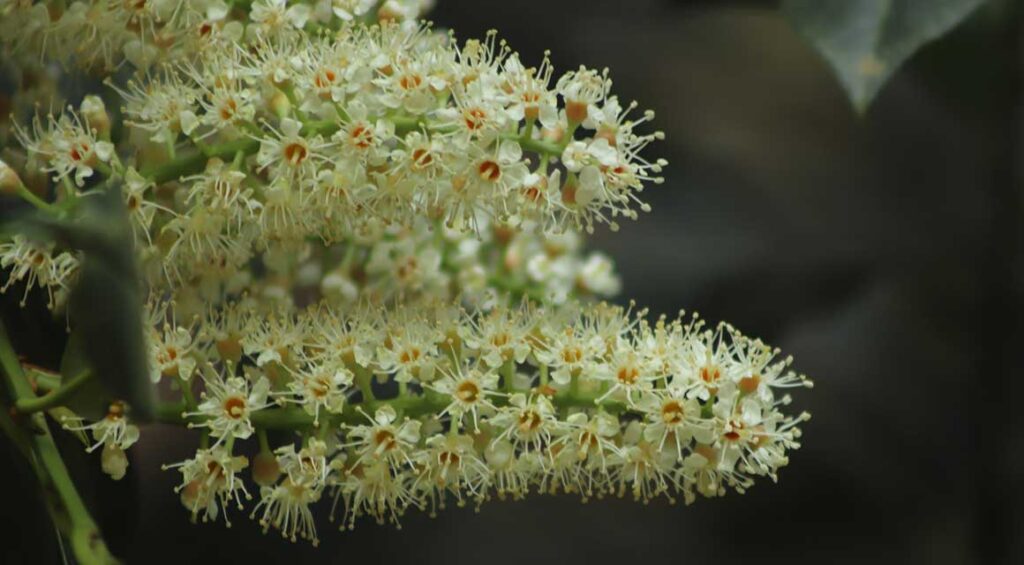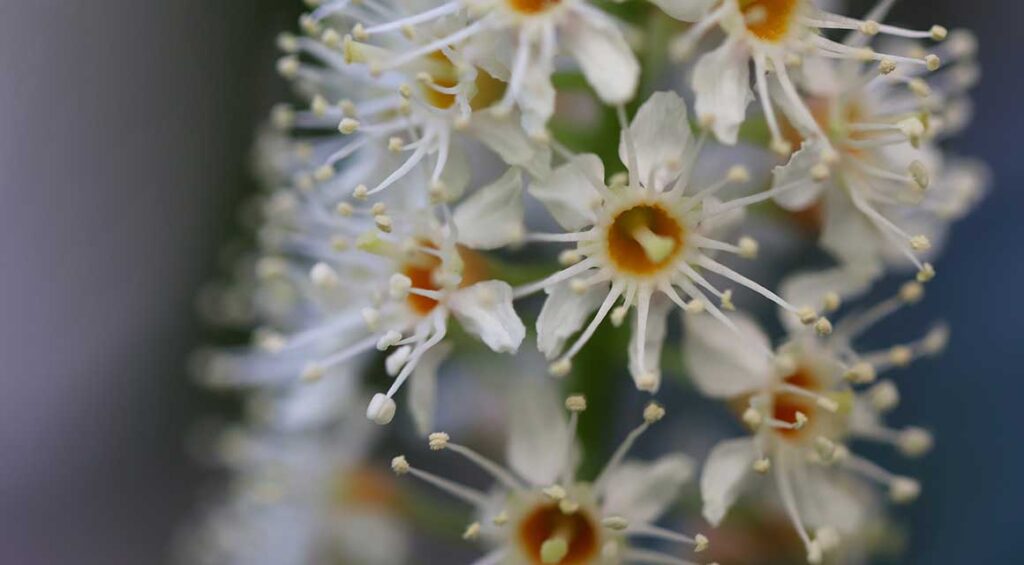The cherry laurel is a relatively easy hedge plant to maintain. It is a hardy hedge plant that can grow in almost any location and usually requires little attention. However, there are definitely mistakes that are made when caring for a cherry laurel hedge. In this blog post you will read how to avoid these mistakes.

Contents
Is the cherry laurel the right plant for me?
Cherry laurel is a very popular hedge plant throughout Europe. So, it’s possible that you may get excited by the idea of a cherry laurel hedge in your own backyard. Although this is often a good idea, it is important to look carefully at the characteristics of the cherry laurel before ordering it. Regardless of how well you care for your cherry laurel, some of its characteristics simply won’t change and it would be a shame to regret your purchase later.
For example, you can’t create a formal hedge with a cherry laurel hedge. The cherry laurel is an evergreen, tall and dense hedge plant, which makes it perfect for privacy hedges. However, cherry laurel hedges have fairly large leaves, so a perfectly square hedge cannot really be achieved with a cherry laurel. Some cherry laurel varieties, such as the ‘Rotundifolia’ cherry laurel and the ‘Novita’ cherry laurel, also grow quite wide, so a narrow, dense hedge is also out of the question. So keep in mind that a cherry laurel hedge will always be a relatively wide, loose hedge – even with narrower varieties like the cherry laurel ‘Genolia’®.
What you should also consider before buying is the fact that the cherry laurel is a poisonous plant. Now, most people won’t be too bothered by this, as hedge plants are generally not eaten. However, if you have curious children or pets, this can be an important consideration. Children or pets sometimes have a tendency to put things in their mouths and with the cherry laurel, this is not a good idea. Please also note that the cherry laurel (Prunus lauroceracus) is a different plant than the kitchen herb: the true laurel (Laurus nobilis).

Sensitivity to water
Cherry laurel is not a demanding plant when it comes to location. It grows well in sun, partial shade and shade. It also does well in most soil types. However, you should make sure that the soil is well-drained. Most varieties of cherry laurel can tolerate drought well, but they don’t do as well with moist conditions. Therefore, make sure that water can easily drain from under the plant. Heavy or wet soils can often be improved by mixing in some garden soil when planting.
Of course, this sensitivity to moisture will also affect how much water you need to give your cherry laurel hedge. In the first year, when the roots are still growing, it’s a good idea to water every week at first and later once a month. Once the cherry laurel is established, it will only need to be watered during very hot and dry periods, but even then, make sure that no puddles form under the hedge. The cherry laurel leaves can also be moistened, but not when the sun shines on them.

When pruning need to be careful
The biggest part of the care of the cherry laurel, is pruning. It is therefore logical that this is where most mistakes are made. Something we often see is that garden owners like to cut back a large hedge with a large hedge trimmer or electric pruning shears. However, in doing so, you inevitably cut the large leaves of the cherry laurel in half. This looks less attractive and causes brown edges on the leaves. It is therefore better to trim back the overhanging branches with smaller scissors.
As mentioned at the beginning, cherry laurel is quite a wide-growing hedge plant, depending on the variety. It is therefore important to prune back at least once a year, sometimes twice, especially in a small garden. Most tall cherry laurel varieties, such as the ‘Etna’ cherry laurel, the ‘Herbergii’ cherry laurel and the ‘Caucasica’ cherry laurel grow about 25-50 inches per year. Most low cherry laurel varieties, such as cherry laurel ‘Otto Luyken’ and cherry laurel ‘Zabeliana’, grow only 10-25 cm per year. A slow-growing hedge plant usually requires less care, but of course is also slower to grow out.

Is the cherry laurel a simple hedge plant?
After reading these possible mistakes, you may feel that the cherry laurel is a difficult plant to maintain in the garden. However, this is not so. As long as it doesn’t get too much water and is cut back regularly, your cherry laurel hedge will thrive. First and foremost, think carefully in advance about the type of cherry laurel you want to plant in the garden. Some cherry laurel varieties grow faster than others, are more or less frost resistant, and the growth habit can vary from upright to compact to wide. For more information, please read the descriptions of our different varieties.

